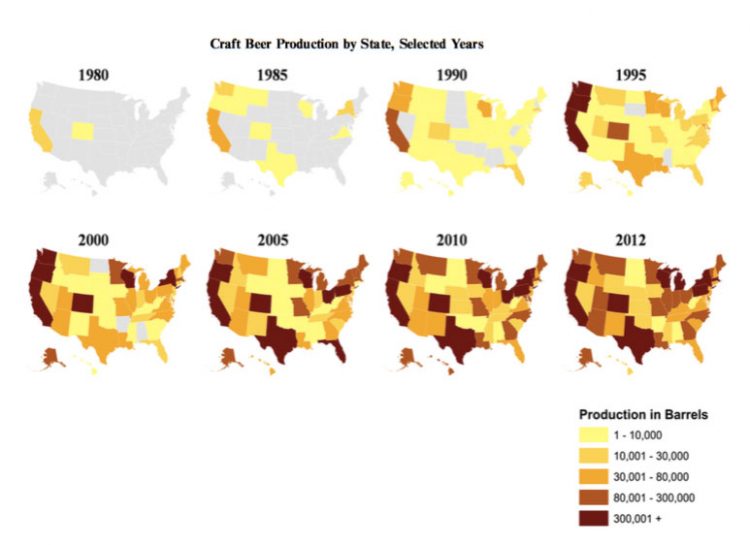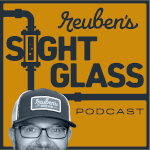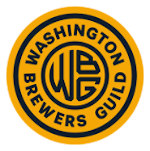A recently released report from the Journal of Wine Economics shows exactly how craft beer spread across the nation over the past 35 years. That is, some big-brained economists sat down and figured out what craft beer historians already knew. Still, it’s interested to read (and see) their geeky version of history.
In 1980, there were basically four craft breweries in America. Three were in Northern California: Anchor Brewing in San Francisco, Sierra Nevada Brewing in Chico, and New Albion Brewing in Sonoma. One, Boulder Beer Company, was in Colorado.
Over the next few years, more craft breweries began to spring up, primarily here in the Pacific Northwest: Redhook Ale Brewery in Seattle (1982), Grant’s Brewery Pub in Yakima (1982), and Hale’s Ale Brewery in Colville, WA (1983), to name a few. I recently heard Will Kemper say that when they opened Thomas Kemper Brewing in Poulsbo back in 1984, there were only 24 breweries in America, and most of them were here in the Pacific Northwest.
The next region to get turned on to craft beer was the Northeast. From there, over the course of 30-plus years, craft beer began to fill in across the Midwest and eventually the entire nation.
The economists who wrote the paper for the Journal of Wine Economics offer an explanation for this pattern. Basically, they narrow it down to four main factors. The first three are demographic: Craft breweries tend to set up in states with higher incomes, a denser population, and a greater number of young adults. The fourth factor involves state regulations. As much as we complain about Washington’s archaic and often byzantine liquor laws, back in the 1980s this was a friendly environment for craft beer pioneers.
I like to believe that the Northwest was (and still is) a hotbed for craft beer because we have a greater appreciation for life’s finer things, but that really isn’t true and I know it. It just sounds good.
If you’d like to look at the entire report from the Journal of Wine Economic, I include it below in PDF format. Otherwise, just take a look at the map below and imagine what life was like before 1980. Or, what life was like before 1990 if you didn’t live in the Northwest.
Click on the map to enlarge.
Here is the entire report.



































I haven’t read the whole paper so I don’t know if this point is addressed but I think initially craft breweries followed in the footsteps of small wineries. The just sought the same regulatory breaks that the already successful wineries were getting and ran with it. Tasting rooms, self distribution, tax breaks …